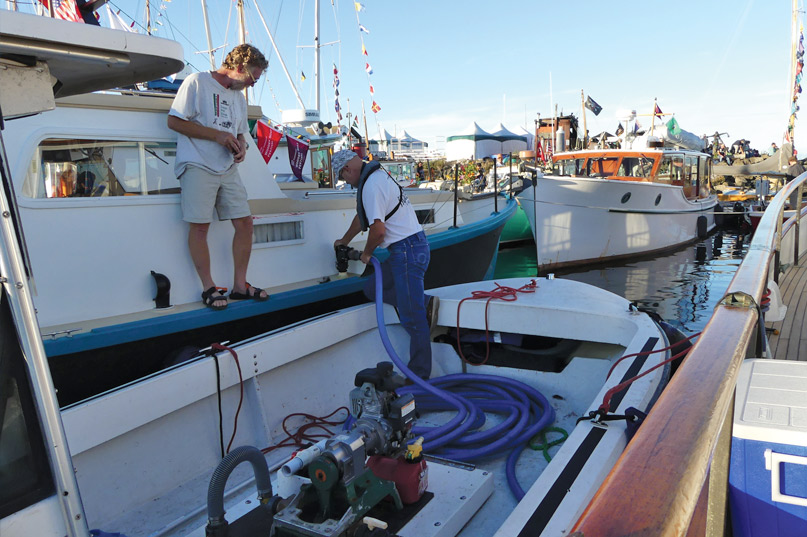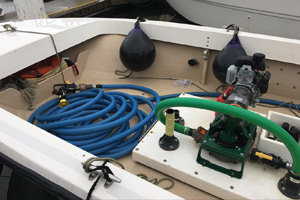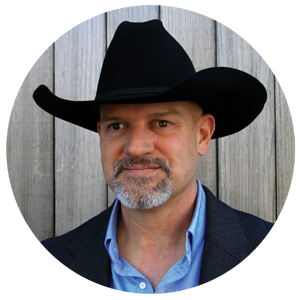
“Water is life, and clean water means health.”
—Audrey Hepburn
There was a time when boaters didn’t think twice about opening their Y-valves and releasing the contents of their holding tanks right into the water. This was also about the time that secondary treated sewage went right into Lake Washington and the waters were often murky with blue-green algae (actually a bacteria) which would wash up on the shore and give off a foul odor. Sewage is full of micronutrients, like nitrates and phosphates, which algae and bacteria need to grow. Too much of these nutrients and the algae population grows out of control. If the blue-green algae population is too large, it can kill off delicate species. and make swimmers ill.
In the early 1950s, after much study by a UW zoologist named Dr. Edmondson, it was determined that preventing sewage from entering the water would solve most of Lake Washington’s problems. King County Metro was founded in 1958 to divert waste and handle sewage, and by 1976 the algae problem was largely solved.
Today, we don’t have sewage pumped directly into Washington’s fresh waters or Puget Sound, but we do have boaters who will empty their holding tanks wherever they are. The law requires that boats pump out their waste, but it’s always tempting to do things the easier way. Terry Durfee, of Terry and Sons Mobile Marine Pumpout Environmental Services, believes that if you make it easy for people to do the right thing, they will. He started a mobile pump-out business and brought the service to the boaters. Now, in partnership with the Washington Sea Grant, his company performs free pumpouts in the Seattle area. We decided to talk to Terry about his company and the details of pumpouts.
Q: How did you get started doing pumpouts?
Well, at the beginning it was just a hobby. I worked for the city of Seattle during the day, I was a civil engineer for the Seattle Department of Transportation. I’d go out on the water every night and weekends and hangout on the boat and I enjoyed it. It was a way to get me out on the water and something I’d never really done before.
Q: Why are pumpouts now required? Why not just dump your tank like boaters used to?
Well, human waste doesn’t need to be in the water. There are a lot of things that human waste carries that whale waste doesn’t carry. So number one, it’s against the law, and number two, it’s the right thing to do, to pump out, instead of dirtying our waters.
Terry and Sons Mobile Pumpout started as just a hobby for Terry Durfee. He noticed what a chore it was to get a pumpout and decided he’d help other boaters in his area. Durfee purchased a pumpout boat from Rhode Island and got out on the water, charging about $30 a trip. Terry and Sons Mobile Pumpout had about 108 customers when Terry decided he was done with the pumpout business. The Washington Sea grant reached out to him and asked if he’d continue to do pumpouts with a grant from the state. Since then Terry and Sons has grown from 108 customers to thousands, one boat to four boats in its fleet, and four employees. With help from donations and grants, Durfee wants to one day offer free pumpouts all over Puget Sound.

Q: Does human waste have an effect on oyster farms, water quality, wild life?
Absolutely, fecal coliforms get into your oyster beds, shellfish, and when sewage is dumped into the water it robs oxygen from the water as it deteriorates, it robs oxygen from other plants and animals.
Q: What was your business model when you first started?
I charged between $30 and $45 depending on how far I had to travel. I had about 108 customers starting out, regular customers. We’d hang out in Andrews Bay, and we lived aboard so my wife would take the big boat right out there and drop anchor and we’d hang out out there all weekend and do pumpouts.
Q: We heard that you were inspired to start a mobile pump-out business by the sheer amount of time and effort it took you to get your boat pumped out. Is that correct?
It would take us a good two hours; we weren’t in a hurry with the big boat. Our boat was down at Newport Yacht Basin and we had to go all the way to Kirkland every two weeks and we figured there’s got to be a cheaper, better way to do it.
Q: How did you go from being a small business to partnering with the Washington Sea Grant and Washington State Parks?
My wife and I decided that we’d had enough of boat life and were going to buy a house and move off the boat, and I thought that I would find other things to do with my free time other than hanging out on the boat. But then, Arron Barnett from Washington Sea Grant got ahold of me and said: “We can’t have you shut the doors, we need somebody out here, have you thought about applying for the grant?” So I did and the state was very helpful in that aspect, and they’d been looking for someone for about ten years to do this, so it was an easy transition, and I took a year’s leave of absence from the city and did pumpouts full time, and now we’re under contract until 2029.
Q: What boat were you using at the start of your business? Was it designed to do pumpouts or was it something you had to modify yourself?
My first boat was an Alcar pump-out boat, and it’s still running today. It’s a 21’ Alcar with a 300-gallon holding tank below deck. It kind of looks like a Boston Whaler; it’s not an eye-sore. It just looks like any other boat cruising by. I drove to Rhode Island and looked at a boat and then had it shipped out here just in time for opening day.
Q: What did your day-to-day look like at the start of your business and how has it changed since then?
It was pretty crazy on the water, we went from 108 customers to 2,000 in a matter of a couple of months. People had known about me and when I was charging, they didn’t really want to pay for it but, now that it’s free, everyone wants it. So that was then and now we’re four, five years into this and I don’t get on the boat much. I have two full-time employees and two-part -time. I spend most of my time out raising donations, because we have a match that we need to raise, a 25 percent match for the grant.
Q: Did boaters just find out about you through word of mouth in the first couple of months?
In the beginning, yeah, it was just hanging out in the marinas and trying to let people get to know me, and I was a member of a yacht club, so I knew a lot of boaters already. The boating community is very tight-knit community, very large but very tight-knit. The word traveled quickly, especially when I went from charging to free, it really blew up. Washington Sea Grant did a lot of publications for me in different magazines to get the word out. I say we have good coverage of Lake Washington in terms of everyone knowing about us. So the big deal is getting people to use us. This last year, we just hit half a million gallons over the four or five years we’ve been doing this. At 25 gallons a shot, that’s a lot of boats.
Q: What does a day of raising donations involve?
Well, we take different kinds of donations. We take monetary donations, but our favorite are in-kind donations. Things like moorage or life jackets, two-stroke oil, the kind of thing that we can use in our day-to-day work that also counts as part of the match for our grant.
Q: Any thoughts on the proposed No Discharge Zone?
The boats that they’re targeting are a small percentage of boats in Puget Sound. We should be discharging properly, regardless of what kind of system you have. The downside of passing a regulation like that is they’ll never make the systems better if no one is using them. There’s no research and development, so it’s a Catch-22.
There are treatment centers out there that do a good job, but those are mostly on larger boats. It’s hard to be on either side. I was never very ecologically thoughtful before I started this, but it’s helped to educate myself on what’s going on out here.
It’s a good thing, but there are cons. The people that offer that kind of equipment and services here will obviously go somewhere else. There could be some loss of jobs.
 Terry Durfee grew up in central Oregon and got into boating later in life. “There isn’t even enough water to swim in, where I come from.” He was introduced to yachting when he and his wife bought a boat and moved aboard. While living aboard, he had to travel to Kirkland to get a pumpout, taking two hours and about $100 in fuel. Knowing that most boaters wouldn’t bother, Durfee purchased a mobile pumpout boat. What was originally just a way to get out on the water more and earn a little extra cash has turned into a full-time job.
Terry Durfee grew up in central Oregon and got into boating later in life. “There isn’t even enough water to swim in, where I come from.” He was introduced to yachting when he and his wife bought a boat and moved aboard. While living aboard, he had to travel to Kirkland to get a pumpout, taking two hours and about $100 in fuel. Knowing that most boaters wouldn’t bother, Durfee purchased a mobile pumpout boat. What was originally just a way to get out on the water more and earn a little extra cash has turned into a full-time job.
Q: Some are concerned that commercial boats with this type-2 toilet set-up will simply decide to go somewhere else.
The cost to retrofit some of these boats will be expensive, so that’s the other side of the coin. I think that if they put this into effect they’re going to have lots of money going out for enforcement and inspection, while if you make it easy for people to do the right thing they’re going to do it.
You think about how long ago we started recycling. It’s just a change in the thought process that we need. And people, especially in this part of the world, are thoughtful about the environment. The old-timers will say: “Oh, the whales go in the water! What’s wrong with us?” Education is important.
Q: Was making it easier for people to “do the right thing” a reason you started your business?
When I first started it wasn’t really about that, it was a hobby, it was something to do that there was a need for. There are those people that pump out religiously and this just makes things a little easier for them. The ones that never pump out are a little bit of a tougher sell.
Q: What do you make of the ever-growing pump-out records?
Washington State has put a lot of money through the grants, they have two funds, the coastal fund and the inland fund through the Clean Vessel Program. About $3.5 to $4 million a year, somewhere in that ball park. They’ve put in pumpouts, they buy pump-out boats, they bought us a new boat last year, and that’s were 75% of our funding comes from.
So they’re using the money to do what they’re supposed to do. And one thing to remember is that this is a self-imposed tax by boaters, that’s where these dollars come from. It’s good that states are using it, and it looks like some states are getting more involved than they have been. All the money that’s put into enforcement and regulations could be put into my match and we could have free pump-outs all over Puget Sound. And people will use it. They’ll use it rather than dump waste over-board if you make it available for them, so we try and make it as available as possible.
Q: Is there a set-up or a piece of equipment that boaters can use to make pump-outs quicker and cleaner?
Yeah, first, the Washington Sea Grant gives away these little adapters, and we’ve given away thousands; they screw right into your deck fitting and you can attach the pump right to your boat. If you don’t have one of those, the most important thing is always turn on the pump, open the valve, then attach it to your boat.
The problem people have is they turn on the pump and they don’t want to make a mess so they leave the valve closed and they put it onto their boat and they open the valve and you get what they call a water hammer and things go everywhere. There are some techniques that a lot of people don’t know, so they don’t want to do it. They’ve heard about what we call the “brown shower,” so people get a little scared about it. If you know what you’re doing, it’s pretty simple.
Q: Do you think the type-2 toilets that have treatment centers onboard are a better option for the environment?
Well, the type-2 uses chemicals, and I don’t know if people are still using formaldehyde in those, because that’s not good for the environment. Probably none of the chemicals being used are formaldehyde, but anything we’re dumping into the water like that is just not good for it.
Q: How can people help you?
Well, donations can be given at time of service. We’re a 501-C3 and we try to make sure that we’re responsible with our donations. We have a donation envelope and we give that to our clients, and it’s self-addressed, so if they pop it in the mail, it goes to our accountants. Or they can give it back to the operator. We have a Pay-Pal button on our website: pumpoutguy.com.
Q: How can marinas help you out?
So some of the marinas that donate—there’s Seattle Yacht Club, Queen City, Newport Yacht basin—Liberty Bay Marina donates a slip, the Duwamish Yacht Club, Jim Clark Marina, everyone on the Duwamish helps out with donations. Stearns has donated life jackets. Six years ago they gave us six really nice life jackets, so we can always use those kinds of things as well.
At Seafair they bring out a barge and put a tank on it, about 7,000 gallons, and we fill it up, so the tank, the barge, the disposal, all that is considered in-kind donation. They give me a spot on the log boom to keep my big boat, so I have a place to stay right there, because we’re out there daylight to dark at Seafair. Those kinds of donations are really what keeps our doors open, the biggest portion of our match is in-kind donations.


